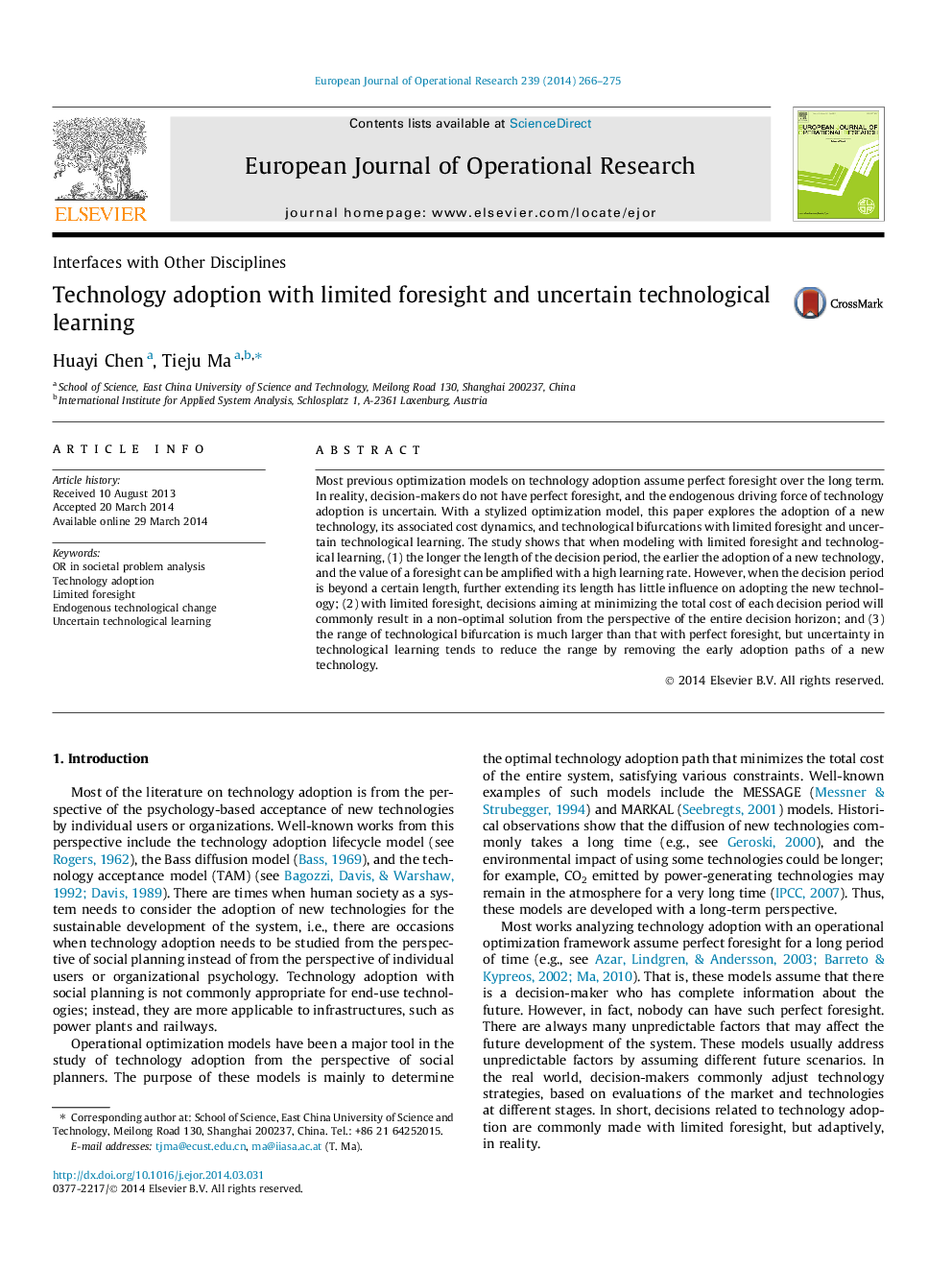| Article ID | Journal | Published Year | Pages | File Type |
|---|---|---|---|---|
| 479806 | European Journal of Operational Research | 2014 | 10 Pages |
•Most previous optimization models on technology adoption assumes perfect foresight.•This paper analyzes the effects of limited foresight and uncertain technological learning.•Decisions minimizing the total cost of each period could result in a non-optimal solution.•The range of technological bifurcation is much larger than that with perfect foresight.•Uncertainty in technological learning tends to reduce the range of technological bifurcation.
Most previous optimization models on technology adoption assume perfect foresight over the long term. In reality, decision-makers do not have perfect foresight, and the endogenous driving force of technology adoption is uncertain. With a stylized optimization model, this paper explores the adoption of a new technology, its associated cost dynamics, and technological bifurcations with limited foresight and uncertain technological learning. The study shows that when modeling with limited foresight and technological learning, (1) the longer the length of the decision period, the earlier the adoption of a new technology, and the value of a foresight can be amplified with a high learning rate. However, when the decision period is beyond a certain length, further extending its length has little influence on adopting the new technology; (2) with limited foresight, decisions aiming at minimizing the total cost of each decision period will commonly result in a non-optimal solution from the perspective of the entire decision horizon; and (3) the range of technological bifurcation is much larger than that with perfect foresight, but uncertainty in technological learning tends to reduce the range by removing the early adoption paths of a new technology.
